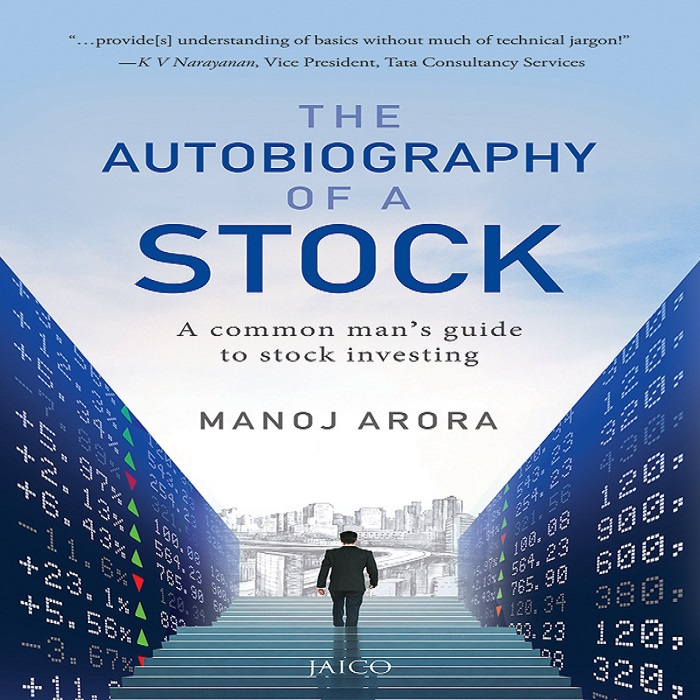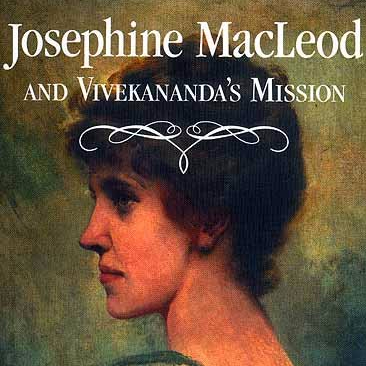One of the benefits of being an Indian middle class child is that you learn much earlier in life that you need to save money, irrespective of whether you like it or not. Most children from these households might have grown up listening to how their parents had to shed blood to ensure financial security for the family. While one must be grateful for all that they have been provided with, one cannot deny the fact that the circumstances of an Indian household doesn’t really approve of or prepare you to take any sort of risks to improve your finances. There weren’t even many takers for entrepreneurship as compared to a paid job, until recently. Continue reading “The Autobiography of a Stock – A Book Review”
Book Review – Rajat Pillai’s Yoddha
The new arrivals section in most bookstores these days are overflowing with mythological fiction, making me want to run at the mention of fiction. The social media has barely recovered from the hailstorm of Padmavati (or should I say Padmavat?). So, I wasn’t sure if it was a safe idea to start reading a historical fiction at this juncture.
I looked at the title of the book again. It said Yoddha. I couldn’t help being reminded of Jodha (Akbar), who was a forerunner for the likes of Padmavati in terms of controversies. The subtitle of the book read, “The Dynasty of Samudragupta”. The author Rajat Pillai must have thought, “Why should the Khiljis, Akbars, and Aurangzebs have all the fun? Let us also wake the Guptas up, from their forgotten graves”.
A friend who saw me reading the book, asked if the book speaks of the wars that Samudragupta had won during his time. Given that the title of the book refers to ‘a warrior’, one would expect the same. However, you get to see more of Samudra, the retiring king and doting father and less of Samudra, the warrior. The story starts after the point in history when the Ashwamedha horse sent by Samudragupta returned unconquered, invariably crowning him the King of Kings. The book begins with Samudra and ends with him but there are many a Yoddhas in the pages in between. While Samudra remains the glorious historical backdrop for the story to unfold, the book is more about the ascending of Chandragupta II. The book does deal with battles but most of them doesn’t involve a sword or an armor.
The challenge with historical fictions is that the readers always know who lives and who dies. The success of such books lies in the narration that keeps the reader hooked to the book even after knowing what is to befall their favourite characters. That way Rajat Pillai chose a rather unconventional plot to keep his audience’s attention. Who would have thought that the future king of the Gupta Dynasty had to be treated for mental illness? On the hindsight, I am wondering if the author tried to create awareness about mental illness through his book. The book has all the usual elements of a historical fiction – war, love, sibling rivalry, treachery and more. An important chapter of the book almost reminded me of a scene from the blockbuster movie ‘Bahubali’, but the later chapters made me realize that there was more to it than what I had assumed.
The chapters dedicated to the amorous adventures of Chandragupta are akin to a Bollywood dance number in the middle of a fast-moving thriller movie. It disrupts the flow of the story, but being an Indian audience, you are used to such fully-packed entertainers. So that way, the book caters to classes and surely is an entertainer. An interesting part of the book was the inclusion of the intriguing Kumari Devi (Kanya Devi) or the Living Goddess in the plot and touching upon the significant role these women play in a kingdom. When you have almost forgotten about Samrat Samudra after the first few chapters, there come the dark secrets from his past weaving some exciting subplots before the grand finale. From Vyom to Madhavasena, the book is quite engaging. However, I do personally think the editorial team could have done a better job.
I come from the creed of people who still can’t get over the Kalki Krishnamurthy’s Ponniyin Selvan (1950) after all these years. 2400 pages and five volumes, one can imagine the amount of research and historical data that would have gone into the making of a book of such magnitude.
With Ponniyin Selvan as the benchmark, it becomes difficult to appreciate any new age historical fiction. However, I am also aware that it is unfair to the author to put his book against the mighty Ponniyin Selvan. So, I must warn you that if you belong in the Ponniyin Selvan fan club, then this book might leave you unquenched. But, if you are a light reader and are tired of the mythological fictions or if you are looking for a page turner, then this is an excellent choice of read for you. I must also credit the author for choosing the Golden era in the Indian history that usually gets overshadowed thanks to all the political controversies. Even if the book doesn’t bring out all the true history of this period, I hope the book will rekindle the interest of the reading population to unearth more knowledge about these rulers and their administration.
Richard Rothman’s ‘Master Opportunity and Make It Big’ from Jaico
I have never been a great fan of self-help books, even if it is about business. I always believed that ‘’one man’s food is another man’s poison”. Our strengths and weaknesses are different and so are our secrets to success. So, when I picked Richard M Rothman’s ‘Master Opportunity and Make it Big” target=”_blank” rel=”noopener”>Master Opportunity and Make It Big’, I was skeptical if I will enjoy reading. However, the author did put some of my doubts to rest in the very first chapter where he narrates a very interesting anecdote from Essel Group’s Chairman Subash Chandra’s life. No matter how delicious your recipes are, you need to learn to plate them well to appeal to the target audience. How can Richard who is one of the world’s leading experts on Business Opportunities go wrong when it comes to his own readers?
I was expecting some more anecdotes in the chapters that followed, but every chapter surprised me and the reader in me was all excited. Each chapter painted ‘opportunity’ in distinct colors and I realized that the book is not trying to be a singular rule book to success but rather an encyclopedia, chronicling the paths to success. You are free to pick and choose whatever suits you. Have you always wanted to establish something that puts social welfare before profit? Do you want to work on areas you have absolutely no knowledge about? Are you worried that you have been trying for years with no real profit? Fear not. Richard’s book seems to have answers to these and a lot more of such questions. If there is one huge take away for me from the book, it is that money or the lack of it won’t stop you from achieving your business goals if you learn to play around with opportunities.
The Master Opportunity and Make it Big” target=”_blank” rel=”noopener”>book has two parts to it. The first part covers the success secrets of India’s Opportunity masters. From Subash Chandra to Sasha Mirchandani, there about 18 success stories that will inspire you to march towards yours dreams. These do not merely talk about the success stories, but also about how they perceived opportunity, persevered through tougher times and had the courage to venture into unknown territories. At the end of each chapter, he also summarizes the golden rules of success for each of these masters. In the second part of the book, Richard talks about forty-four opportunity sutras which includes Opportunity Accelerators, Opportunity Activators, Opportunity Evaluators, Opportunity Expediters.
The Master Opportunity and Make it Big” target=”_blank” rel=”noopener”>book has arrived at a time when the Indian market is abuzz with startups. The years 2016 and 2017 saw a lot of seemingly promising startups shut down. A study by inc42.com reveals that “50% of the founders, post-shutdown, have joined another company and are working on leading positions such as category head, CEOs, VPs and more. But only a small chunk has made a comeback as founders”. I believe this book would provide the impetus to turn that number around. The insights that this book provide makes it, a must-read for any aspiring entrepreneur even those with a string of failed attempts. It does have its own cliched 3Cs, 3Ds, 5Ws etc. but if you can take them on your stride, this book is a good place to reach for some encouragement. Even if you are a non-reader, you can still try the book because the presentation of the book is simple and keeps you engaged. You can read in parts or may be just the golden rules.
I was a tad disheartened because all the Opportunity masters listed in the Master Opportunity and Make it Big” target=”_blank” rel=”noopener”>book were all males. I do really hope Richard would care to tell us about the masters from the other genders in the next edition of the Master Opportunity and Make it Big
” target=”_blank” rel=”noopener”>book. Not that any of these secrets to success are gender-dependent, but there are gender-dependent challenges. Bringing out the stories of Opportunity master from the other genders will add an extra boost to the aspiring entrepreneurs from the other genders. Having said that, irrespective of your gender, this is one of those books, you can read and reread multiple times.
Patanjali Yoga Sutras – Know Thy Self
“The simplest meaning of the word sutra is “thread”. A sutra is, so to speak, the bare thread of an exposition, the absolute minimum that is necessary to hold it together, unadorned by a single “bead” of elaboration. Only essential words are used. Often, there is no complete sentence-structure. There was a good reason for this method. Sutras were composed at a period when there were no books. The entire work had to be memorized, and so it had to be expressed as tersely as possible Patanjali’s Sutras, like all others, were intended to be expanded and explained. The ancient teachers would repeat an aphorism by heart and then proceed to amplify it with their own comments, for the benefit of their pupils. In some instances these comments, also, were memorized, transcribed at a later date, and thus preserved for us.”
From the Translators’ Foreword.
Josephine MacLeod And Vivekananda’s Mission – A Song of Freedom
“Two weeks after her sudden departure for California, Swami Vivekananda praised Joe’s detachment, as noted in a letter from Betty to Joe, written October 27:
He spoke of “Joe” and said you were the only real soul who had “attained freedom among us all,” including himself. You could drop everything, everybody and go out without a thought of regret & do your work, that you had attained this through thousands of reincarnations, he had seen it in India & here. No luxury counted, no misery (as in India) mattered – [you were] the same poised soul, etc.
Continue reading “Josephine MacLeod And Vivekananda’s Mission – A Song of Freedom”




